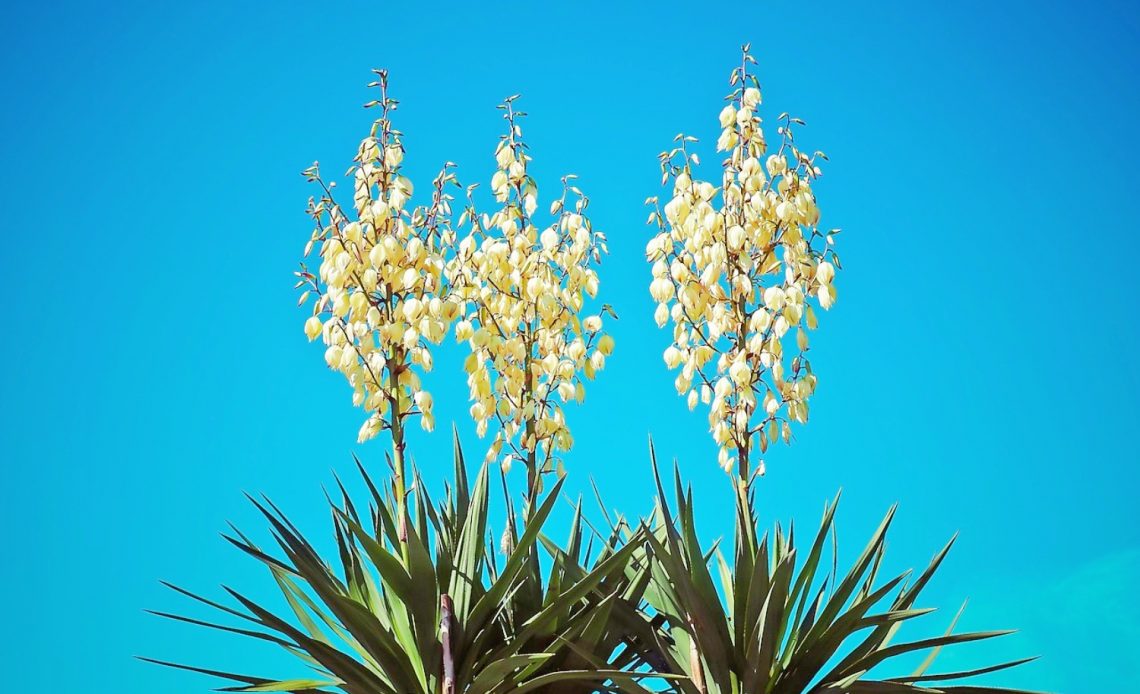

We’re here to help! Wild Yards is a completely free website that is 100% dedicated to helping you create a wildlife-friendly, sustainable yard. Read more
WildYards is reader-supported. When you buy a product through a link on our site, we may earn a comission. Every product is independently selected by our (obsessive) editors and our reviews are unbiased and objective. Read more about our mission or our privacy policy.
Yuccas are low-maintenance plants perfect for southwest-inspired landscapes. But their unique appearance makes them well-suited to a variety of other landscape styles as well.
A relative of agave, yucca is a spiky plant that produces dramatic sword-shaped leaves.
Its eye-catching appearance makes it the perfect focal point for cactus beds. However, these large shrubs can be grown as a hedge, too, to give your backyard more privacy.
The yucca plant’s foliage is reason enough to grow it. But it’s the plant’s gorgeous white flowers that make it so popular with gardeners.
In ideal conditions, yucca plants bloom several years after planting.
But sometimes getting your yucca plant to bloom isn’t as easy as ABC. It takes persistence and determination.
With the right care, you can help your plant produce yucca flowers. But how exactly can you get your yucca to blossom?
Meeting all of your yucca’s growing requirements will help the plant bloom. But high-phosphorus fertilizers, judicious pruning, and changing up your watering schedule can kickstart the flowering process, too.
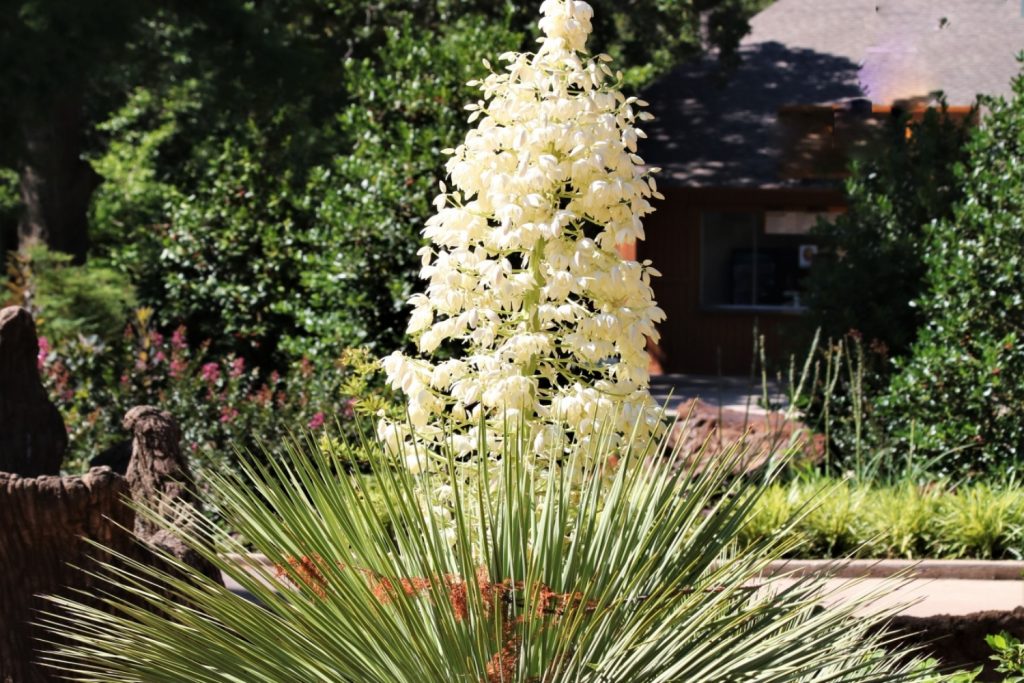
What are yuccas?
Members of the Asparagaceae family, yuccas are a group of perennial shrubs that can be found growing natively across North, Central, and South America.
In the United States, yuccas can be grown from zones 5 through 10.
These distinctive shrubs thrive in hot, arid climes where there isn’t much water to come by. Their low moisture requirements are one of the reasons why they’re such a popular choice for ornamental gardens.
Yuccas produce long, stiff leaves that are narrow and sword-shaped. The leaves grow in a rosette pattern.
Some species of yucca have serrated leaves which can be painful to the touch, especially if you bump into them without meaning to!
The plant’s fibrous leaves can be used to make baskets and mats, and the plant’s fruits have medicinal qualities. Yucca has been shown to possess potent anti-inflammatory, antimicrobial, and antioxidant properties.
Most landscapers choose to grow yuccas for their gorgeous white blossoms. Mature plants produce tall stalks with bell-shaped creamy white flowers.
After the yucca flowers, the plant produces leathery seed pods containing small seeds.
The seeds can be saved to start new plants. But because yucca plants can be difficult to start from seeds, they’re often left on the stalk for animals like squirrels, rabbits, and birds, to enjoy.
When do yuccas produce flowers?
Yucca flowers are stunning, and a great way to add drama and interest to your landscape.
Plants typically begin to flower between 3 to 5 years of age. Some plants can take much longer if their growing conditions aren’t being met.
It’s worth keeping in mind that yuccas are a relatively slow-growing plant, and plants will only begin producing blossoms once they’re well-established.
When exactly your yucca plant will begin to blossom depends on its variety. But, in general, yucca plants start producing flowers anywhere from late spring to midsummer.
Environmental factors, such as rainfall and temperature, can also play a role in determining when your yucca flowers.
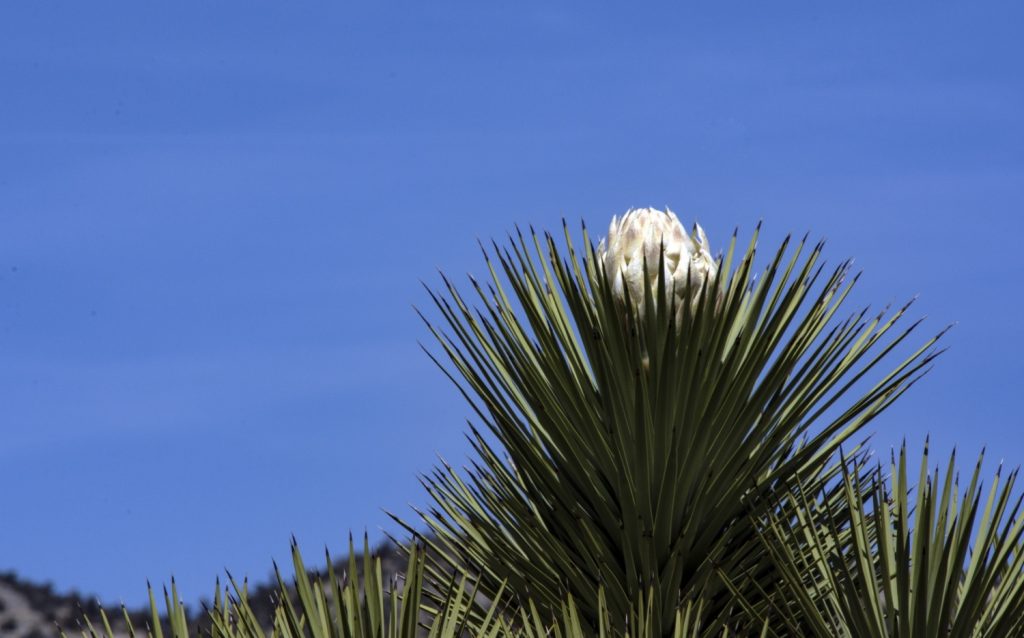
How often do yuccas bloom?
Once again, your yucca’s cultivar plays a significant role in determining how often the plant will bloom.
And environmental factors are also important. Too much or too little water can stress the plant, as can excessively hot or unseasonably cold temperatures.
Some plants may go years between blooming periods. But healthy, well-established yuccas usually bloom once a year.
The flowering period for the yucca plant is pretty short-lived, with flowers lasting only a few weeks before drying up and falling off.
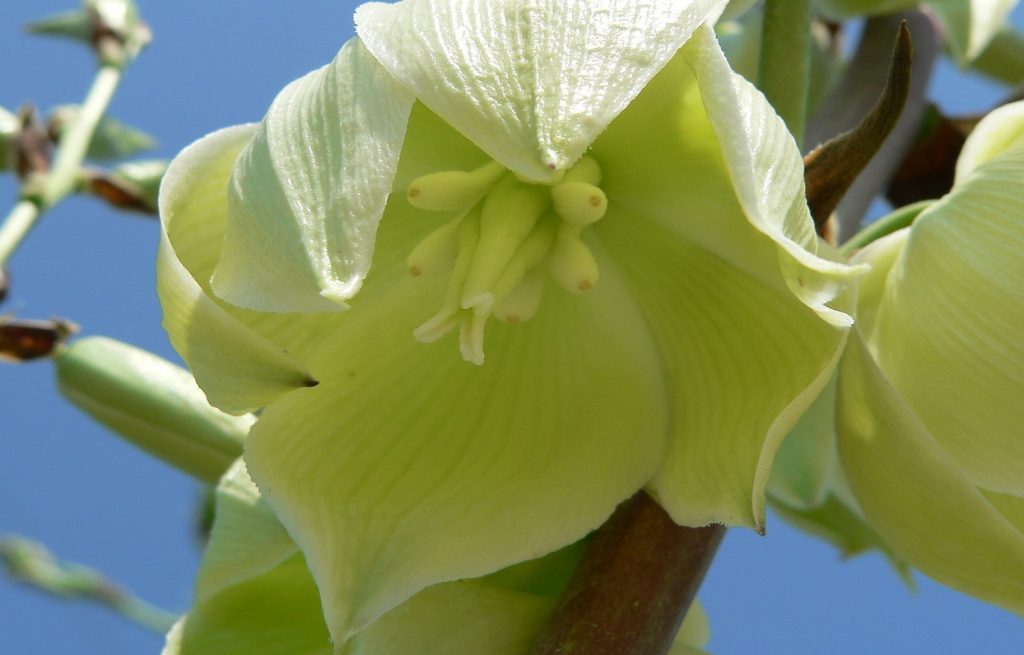
How can you encourage your yucca to bloom?
If you’ve had your yucca for years and the plant has yet to bloom, you may be scratching your head wondering what you’re doing wrong.
The fact is, yuccas can be picky. And because they’re slow-growing, it’s easy to get frustrated with the plant’s seeming lack of progress.
But with patience, and the right care, you can support your yucca plant and encourage it to produce flowers as fast as possible.
Here’s what you’ll need to do:
Ensure the plant gets plenty of sunlight
Remember, yucca plants are native to arid regions. They grow in deserts, grasslands, and near mountains — wide, open spaces where there isn’t much shade.
If you want to see some yucca flowers for yourself, you’ll need to make sure your plant gets plenty of sunlight.
Situate your yucca plant in a location where it will receive 6 or more hours of sunlight every day.
If you live in a particularly hot region, your yucca may benefit from some afternoon shade. This will help the plant conserve moisture during the hottest part of the day.
If your yucca plant hasn’t flowered, and it’s more than a few years old, the first thing you need to investigate is how much light it’s receiving.
Consider transplanting your yucca to a new location, one that suits its sunlight requirements. Getting the right amount of light is key to helping your yucca blossom.
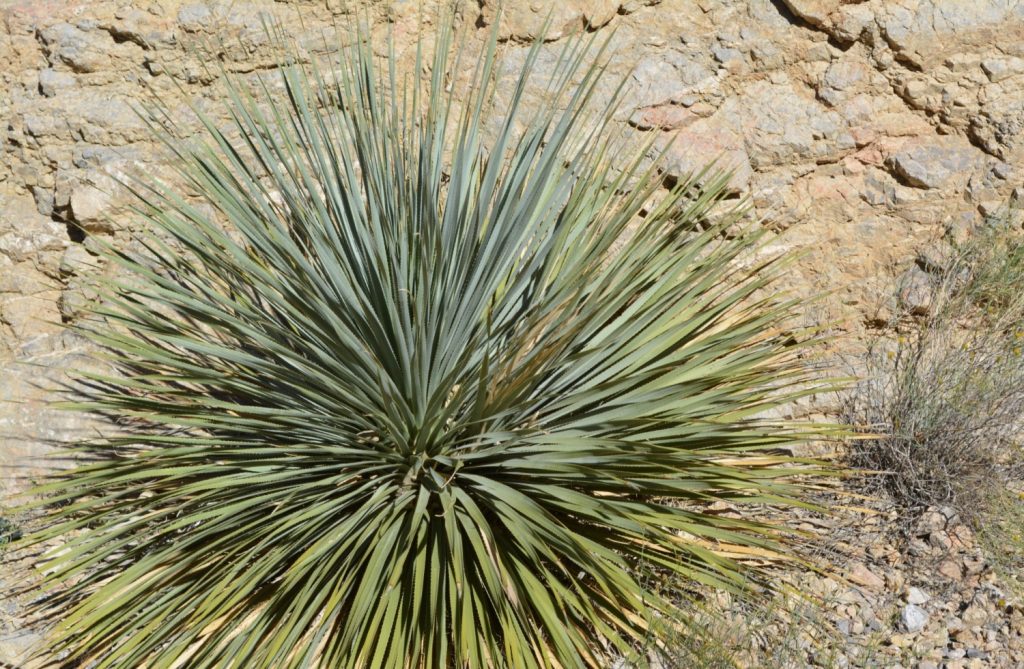
Keep the plant out of strong winds
Yucca plants don’t like to be jostled about by strong wind gusts.
It’s important to keep the plant out of windy areas. If the plant is constantly being blown around, this can disturb the roots.
Stress on the roots translates to stress on the entire plant. And if your yucca is too stressed out trying to stay anchored in place, it may never begin producing flowers.
High winds will also knock the plant’s delicate flowers off of the stalks, making it look like it hasn’t bloomed even when it has.
Keep your yucca plant in the center of your cactus beds or up against a fence or other structure to provide it with some protection from the elements.
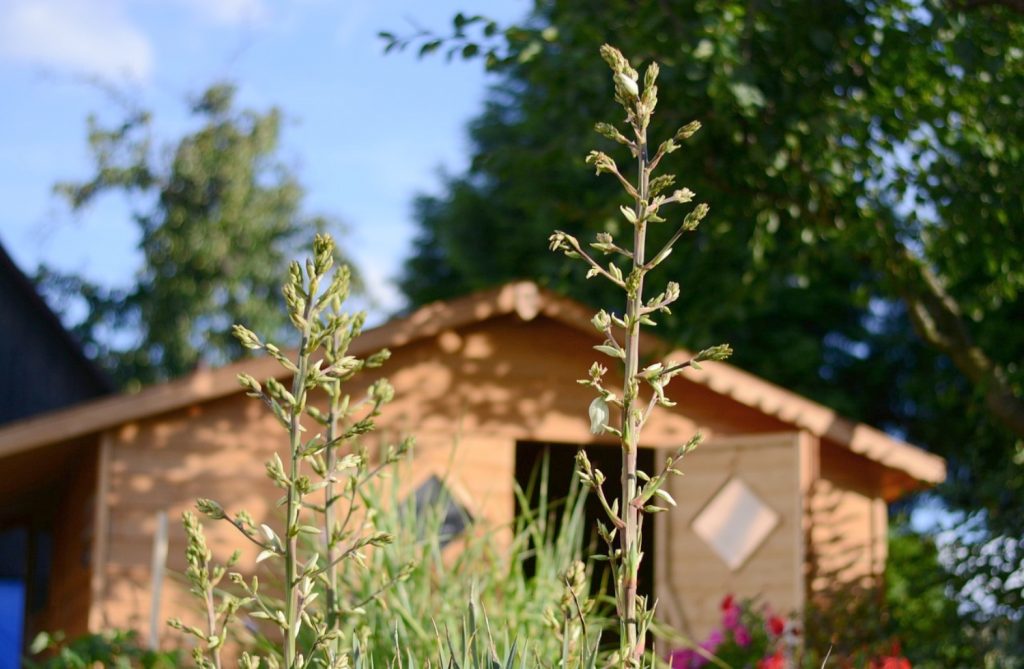
Improve air circulation
Although you should keep your yucca out of harsh winds, it’s critical that the plant get good air circulation.
High humidity, especially at the base of the plant, can contribute to root rot.
Leave 2’ to 3’ between small yucca cultivars, 3’ to 6’ between medium cultivars, and 5’ to 10’ between large cultivars.
Adequate air circulation helps prevent bacteria and fungi from setting in and compromising your yucca plant’s health.
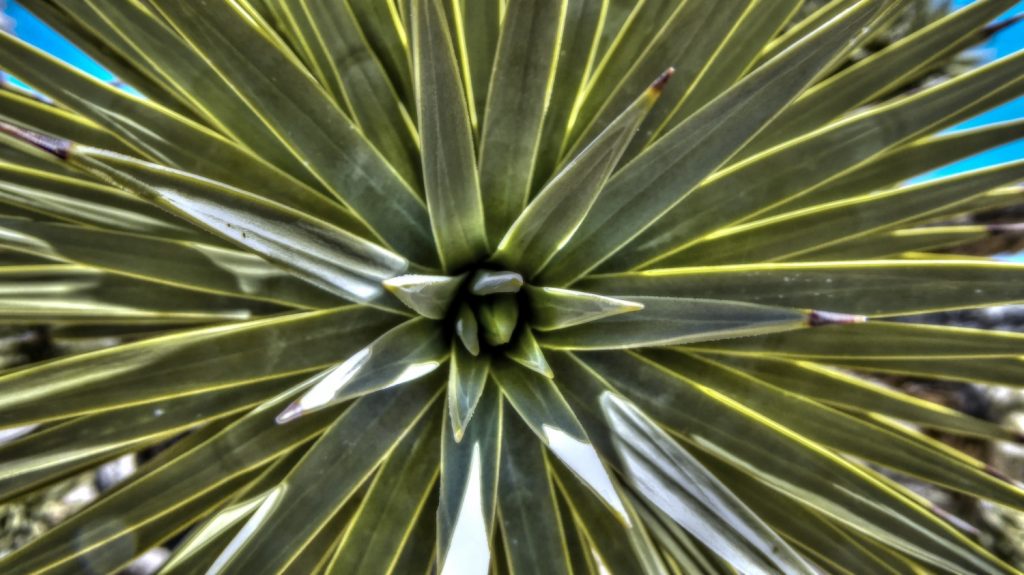
Plant your yucca in the right soil
Yuccas can be quite sensitive when it comes to soil.
As desert natives, yuccas prefer to grow in well-draining soils that are on the sandy side.
Yuccas are somewhat adaptable. So although it’s possible for plants to survive in loamy soils that tend to stay moist, they usually don’t thrive in them, especially if they live in a cooler climate.
While southern growers may be able to get away with planting yuccas in loamy, moist soil, gardeners in cooler growing zones will need to adhere to the plant’s soil requirements more closely.
Choose loose sandy-loam soils for your yucca.
You can amend overly loamy soils with horticultural sand to improve drainage. Conversely, if your soil is too sandy, add a few shovelfuls of compost.
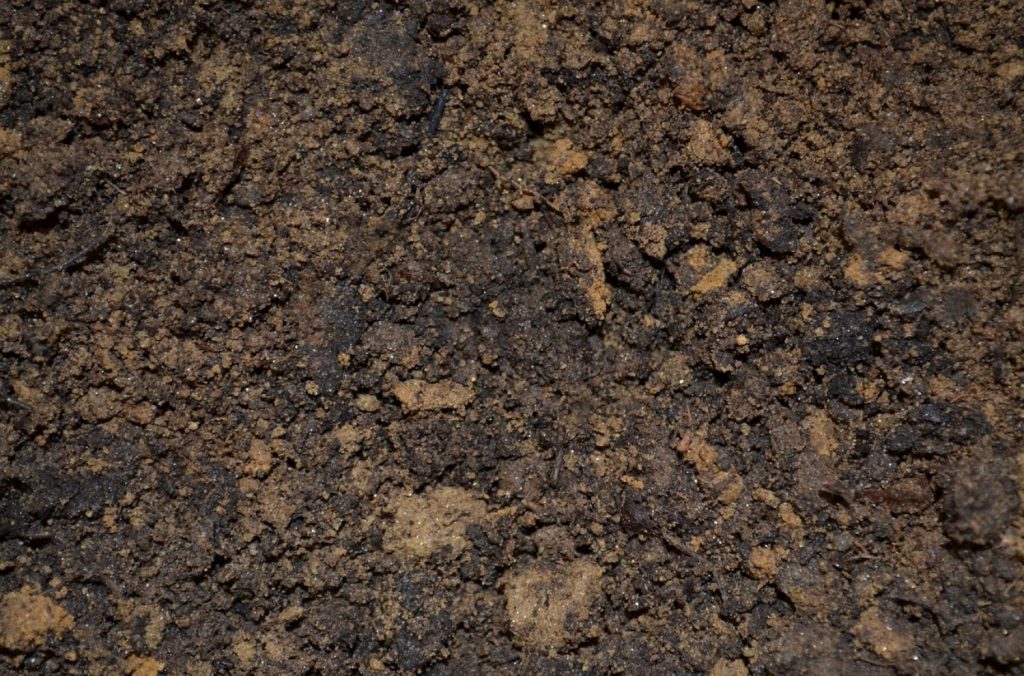
Check the pH
Pay close attention to the soil’s pH level, too.
Yuccas grow best in soils that are slightly acidic to neutral, with a pH level of 6.0 to 7.0.
You can determine your native soil’s pH level with the help of an at-home soil test.
If you find that your soil is too acidic, you can raise the pH a few ticks by adding agricultural lime or wood ash.
And if your soil is too alkaline in nature, it can be made more acidic by adding things like peat moss, coffee grounds, and sulfur.
Be sure to test your yucca’s soil annually so you can make adjustments to the pH level as needed.
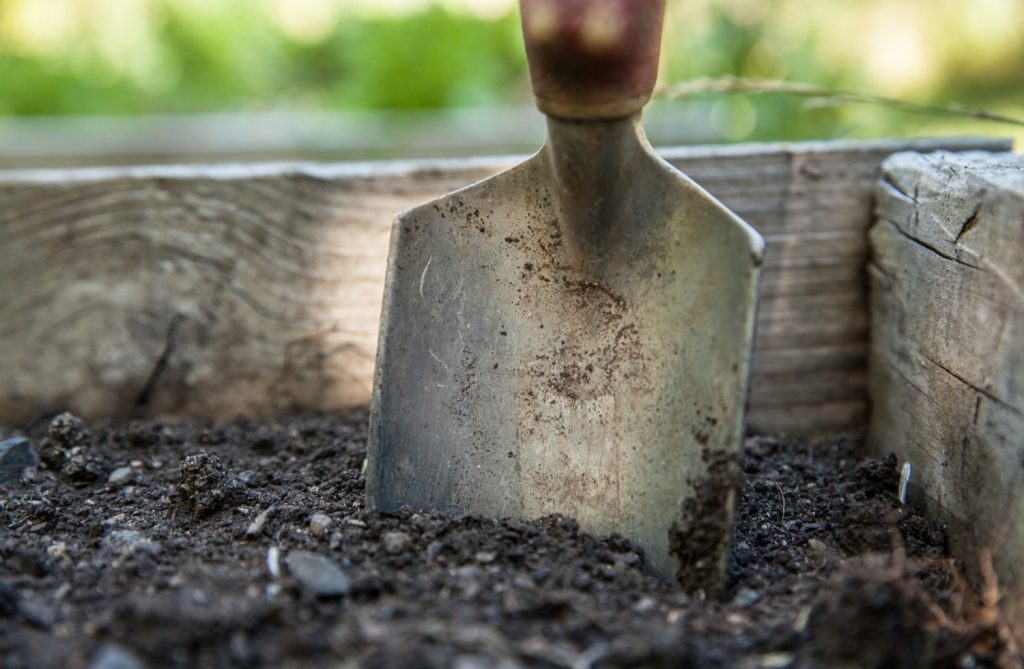
Water the plant sparingly
Yuccas really don’t need much water. They grow in the desert, after all!
A rookie mistake with these plants is to give them more water than they need.
Don’t get us wrong, yuccas do need enough water. It’s important to keep these plants hydrated, especially when they’re young and/or have been newly transplanted.
Keeping the soil moist is what helps these plants get established, and getting established is critical to the flowering process.
But if you make the mistake of overwatering your yucca, this can have several negative effects.
For starters, overwatering can contribute to root rot. And that can kill your yucca plant, or at the very least significantly hinder its growth.
If the plant manages to avoid developing root rot, the excess water may encourage the plant to produce more leaves rather than flowers.
It’s thought that water stress can help the yucca plant produce more blossoms. Withholding water from established plants helps them shift from their vegetative stage to their blooming stage — not unlike romaine lettuce.
If your yucca plant has failed to produce flowers, it’s worth reassessing the plant’s watering schedule.
If you find you’re watering the plant more than once a week, turn off the hose and let the soil dry out. And, if you haven’t watered the plant in months, give it a good, long soak to hydrate the deepest roots.
Determining how often you should water your yucca may seem like a balancing act at first. It will take some trial and error.
But allowing the plant’s soil to dry out between waterings, and watering it deeply every so often, will support its ability to flower.
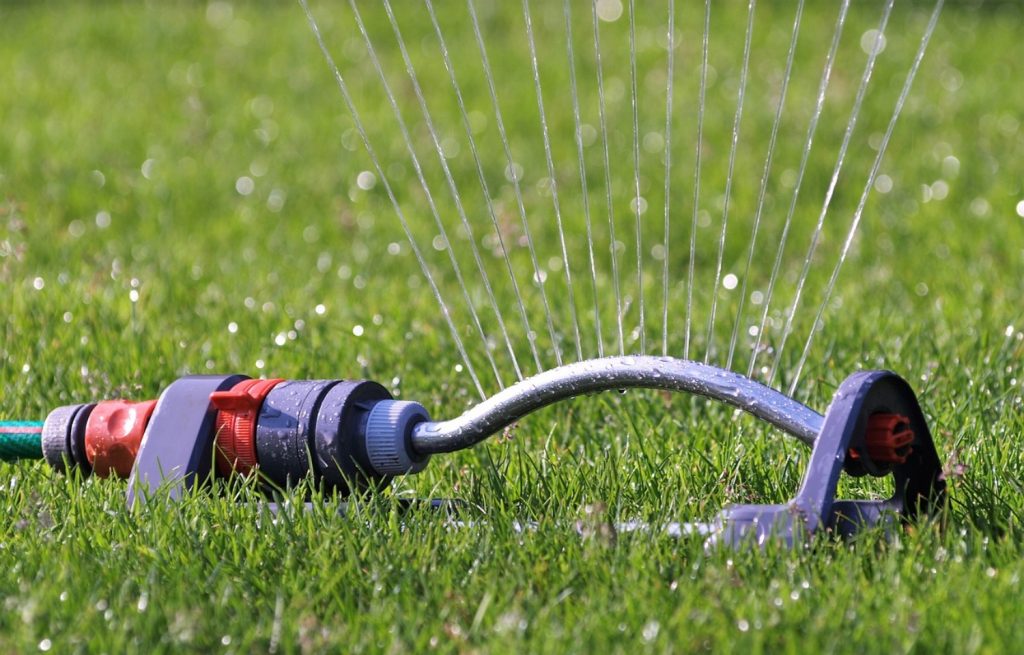
Use the right fertilizer
Sandy soils tend to be less nutrient-dense than loamy soils. Because yuccas prefer sandy soils, they also have relatively low nutrient needs.
That said, they still require the right nutrients and in the right amounts to produce flowers.
Like other plants, yuccas rely on nitrogen to help them produce foliage, and phosphorus to help them bloom and make their fruits.
Yucca also relies on potassium to survive environmental stressors, like temperature changes and dry spells.
Applying high-nitrogen fertilizers, like manure and blood meal, can prevent your yucca from blooming. The extra nitrogen encourages the plant to produce more foliage.
High-phosphorus fertilizers, on the other hand, provide the plant with all of the materials it needs to start blooming. High-potassium fertilizers are beneficial, too, because they give the plant everything it needs to survive stressful situations.
To encourage your yucca to flower, apply an NPK fertilizer that is low in nitrogen, and higher in phosphorus and potassium.
Feed your yucca a dose of 5-10-10 or 10-20-20 in early to mid-spring to encourage healthy flower production.
Always test your soil before applying fertilizer to avoid overapplying certain nutrients. Overfertilizing your yucca can also prevent it from blooming.
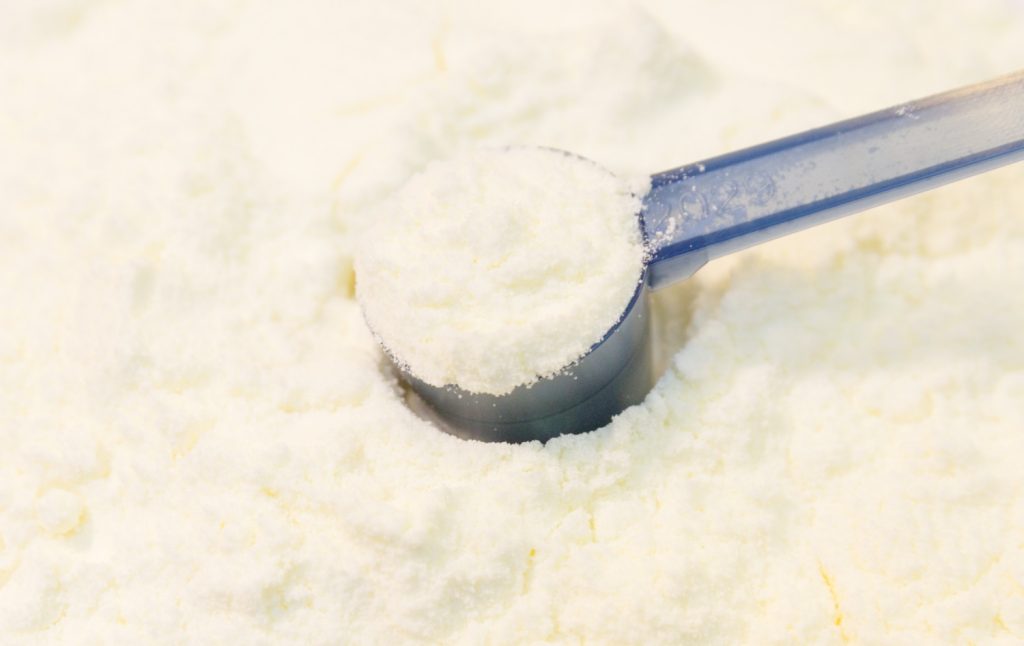
Prune just enough and at the right time
Yuccas dislike being fussed over. Trying to shape your yucca can stress it out severely, and prevent it from blooming.
There’s no need to prune these plants, except to remove broken and/or obviously dead leaves.
If you must prune your yucca, do so at the end of winter or the beginning of spring.
Use sharp shears to clear up any debris, including dead leaves, flower stalks, and decaying foliage around the base of the plant.
If the plant has too much foliage, you can thin it at the crown a bit. Make clean cuts close to the stem.
Always err on the side of under-pruning, as over-pruning can kill a yucca plant.
Water your plant well afterward to help it recuperate after the “procedure”, but avoid overwatering. The added stress of root rot certainly won’t help the plant recover from pruning.
Note: Be sure to wear long sleeves, jeans, and gloves when pruning yucca plants to avoid getting sliced or poked by their stiff foliage.
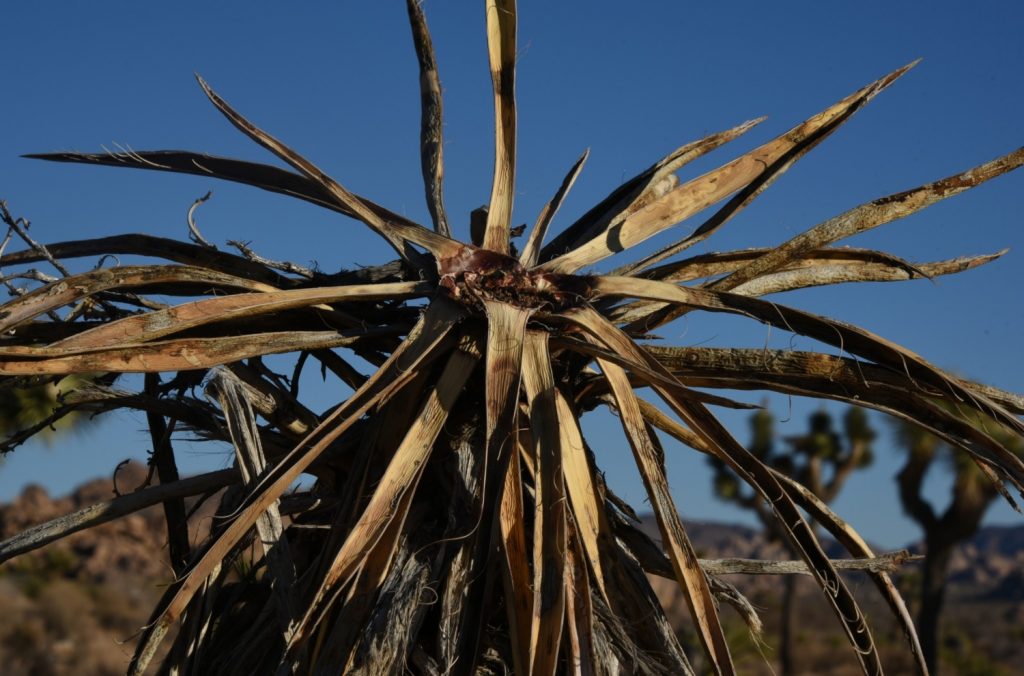
Divide the plants to give them enough space
Yuccas spread via rhizomes that are rooted to the mother plant.
After the plant’s first flowering period, it will shift its focus to propagating itself vegetatively.
Even though it’s possible for yucca plants to bloom annually, most plants will skip a year or two as they focus on making new plants.
Over time, plants can become crowded and compete for space and resources.
If your yucca is crammed into a small space with a bunch of smaller plants, dig up some of the young offsets and move them to give the established plants more room to grow.
Divide your yuccas in spring during the active growing phase to help the plants recover after they’ve been divided.
Once your yuccas have enough room to spread out, they’ll likely start blooming more often.
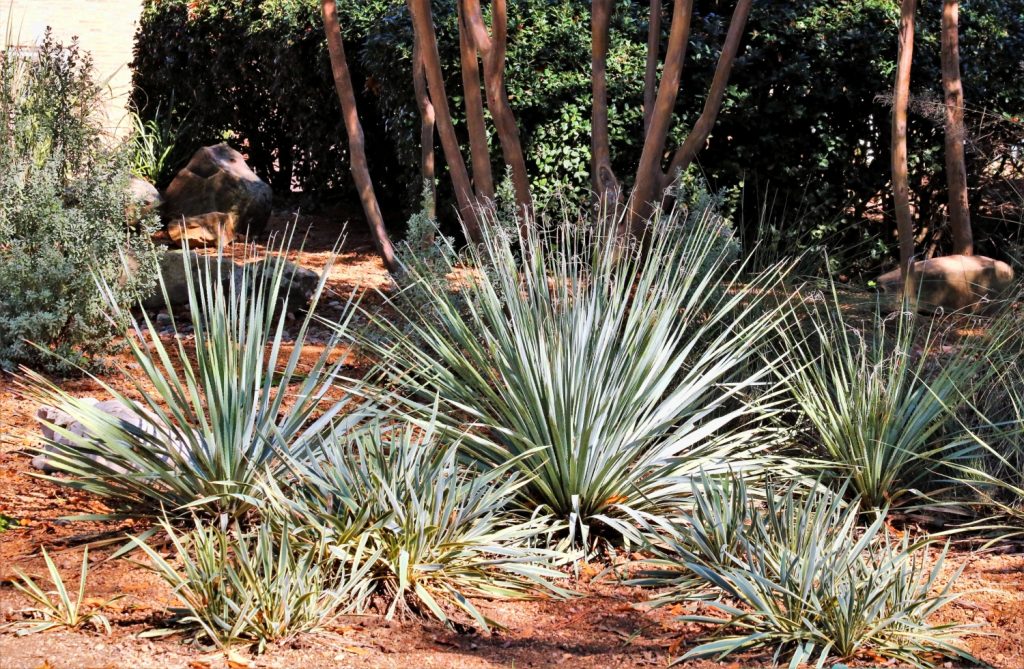
Does deadheading help yuccas bloom more?
Yucca flowers only last a few weeks, after which time the bell-shaped blossoms dry up and fall off, and the stalks they grew on whither and die.
Unlike other ornamental flowers, like hydrangeas and salvias, yucca plants do not benefit much from deadheading.
Although it’s not unheard of for yucca plants to produce more than one flower stalk in a year, most plants only produce a single stalk in a season.
Eliminating the flower stalk after it dies does not help the plant produce more flower stalks.
Removing the stalk is not necessary. However, some gardeners believe this helps the plant prepare to bloom again next year.
Cutting the flower stalk off after the plant is done blooming will also improve its appearance.
If you choose to trim the yucca flower stalk, cut it away as close to the center of the rosette as you can safely reach.
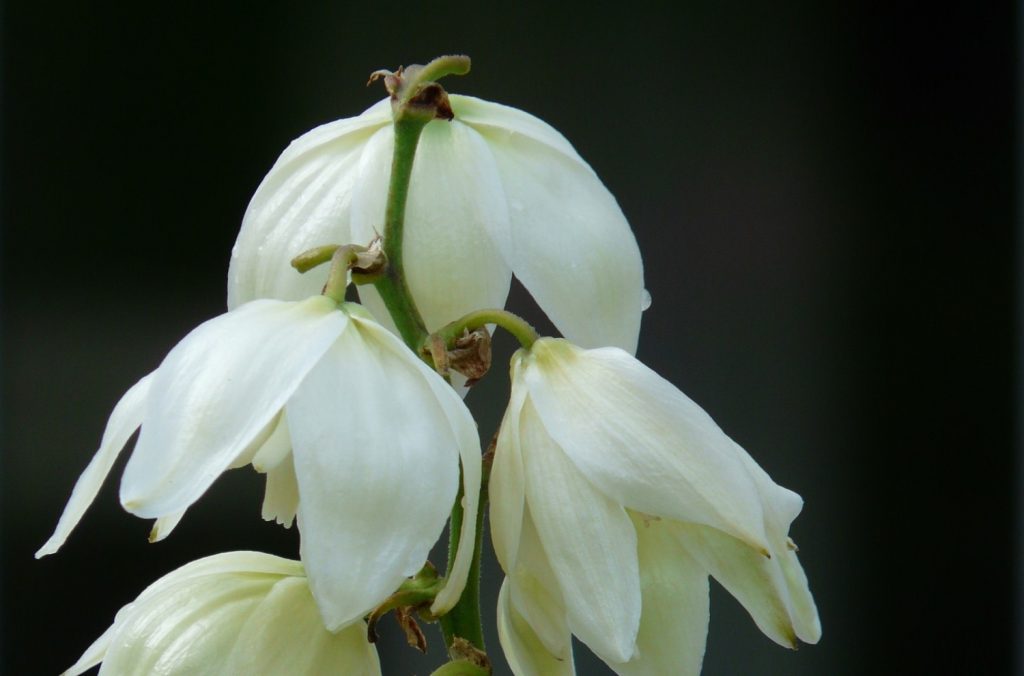
What can you do with yucca flowers?
If you’re an avid backyard forager, you’ll be happy to learn that yucca flowers are edible — and, what’s more, they’re delicious!
Most people eat the petals of the flower alone, which are slightly bitter and taste much like an artichoke.
The flower petals can be sauteed with other delicious finds, like orange lobster mushrooms, dandelions, and sunflower leaves.
Toss in some red onions, salt, pepper, and garlic for flavor, and you’ve got yourself a delicious side dish!
Yucca flowers can also be dried and used in floral decorations, potpourris, and handmade bar soaps.
Do pollinators enjoy yucca flowers?
They sure do! Bees, butterflies, and hummingbirds are all fond of the delicately-scented yucca flowers.
But no pollinator enjoys visiting these blossoms more than the yucca moth.
Yucca moths play such a critical role in the flowering process for yucca plants that many plants fail to flower and produce seeds when these moths are absent.
These small white moths lay their eggs on the yucca plant’s foliage, where their young can feed in safety once they hatch.
In return, the adult moths pollinate the yucca plant’s flowers, enabling the plant to reproduce.
If you live in an area where these moths are scarce, you may need to hand-pollinate your yucca plant to encourage it to keep blooming in the years to come.
More tips for growing yucca flowers
If you’ve done everything right with your yucca plant, and it still hasn’t bloomed, the best thing to do is to just be patient!
As long as you’re careful to meet all of their growing requirements, there really aren’t any secret methods for getting the plants to flower.
Yucca plants bloom when they’re good and ready.
By providing your yucca plant with consistent care, and by heading off potential problems before they become an issue, you can support your yucca plant throughout its growth cycle and encourage the plant to flower as quickly as possible.
